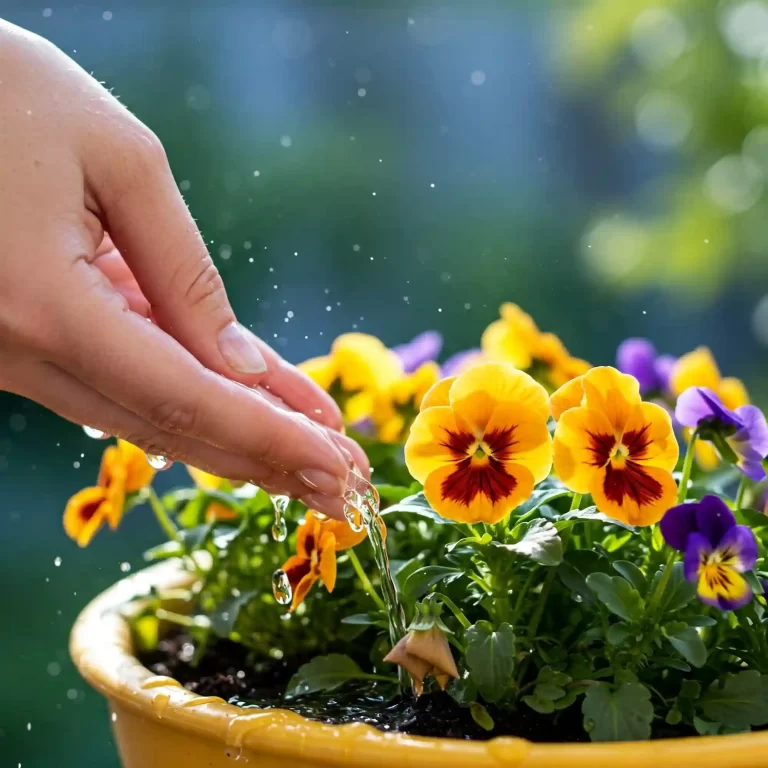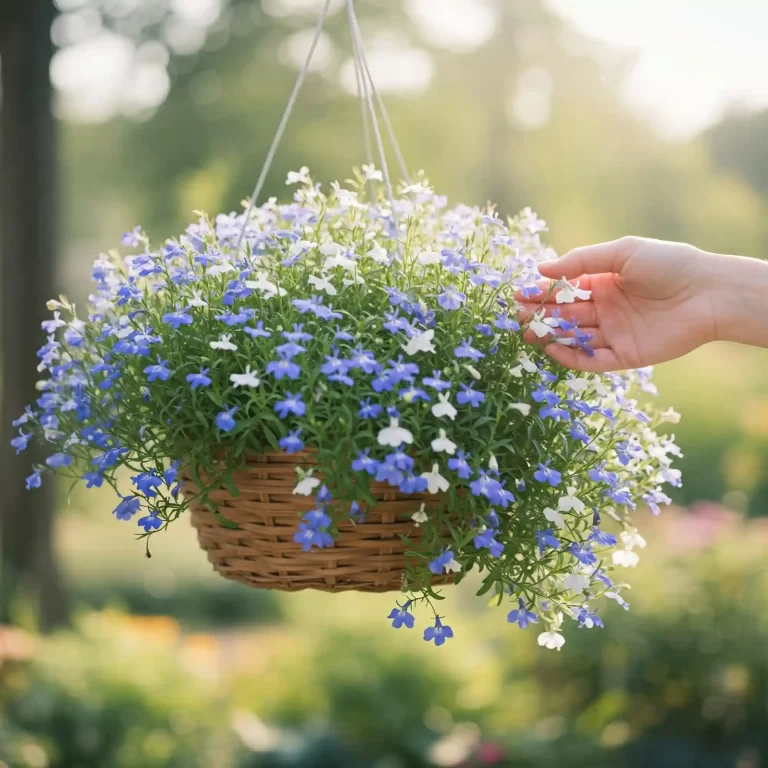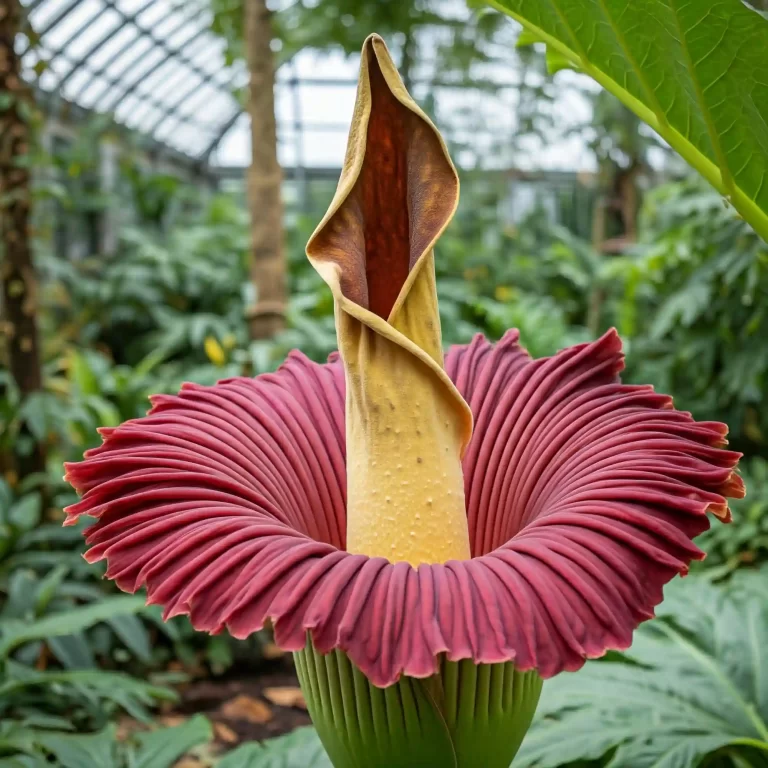Growing Snowdrop flowers can be a rewarding experience, but many gardeners struggle with getting these delicate blooms to thrive. You might have tried planting them before, only to see them fail to bloom or wither away. This can be frustrating, especially when you see other gardens flourishing with these beautiful early spring flowers. The good news is that with the right knowledge and techniques, you can successfully grow Snowdrop flowers and enjoy their charming presence in your garden. In this comprehensive guide, we will walk you through everything you need to know about how to grow Snowdrop flowers, from choosing the right varieties to caring for them year-round.
What Are Snowdrop Flowers?
Snowdrop flowers, scientifically known as Galanthus nivalis, are among the first flowers to bloom in early spring, often pushing through the snow to herald the arrival of warmer weather. These perennial plants are beloved for their delicate, nodding white flowers and their ability to thrive in cold climates. Snowdrops are part of the Amaryllidaceae family and are native to Europe and the Middle East. They have been cultivated for centuries and are a symbol of hope and renewal.
Description and Characteristics
Snowdrop flowers are small, typically growing to a height of 3 to 6 inches. Each plant produces a single flower, which consists of three outer petals and three inner petals. The inner petals are often marked with green tips, adding to the flower’s charm. The leaves are narrow and grass-like, emerging from the base of the plant.
Historical and Cultural Significance
Snowdrops have a rich history and cultural significance. They are often associated with purity and hope, and in some cultures, they are considered a symbol of the Virgin Mary. In the Victorian language of flowers, Snowdrops represent consolation and hope. They are also featured in various myths and legends, such as the story of Persephone in Greek mythology, where Snowdrops are said to have bloomed when she returned from the underworld, signaling the end of winter.
Table: Snowdrop Flower Characteristics
| Feature | Description |
| Scientific Name | Galanthus nivalis |
| Family | Amaryllidaceae |
| Native Range | Europe and the Middle East |
| Height | 3 to 6 inches |
| Flower Structure | Three outer petals, three inner petals |
| Leaf Structure | Narrow, grass-like |
| Bloom Time | Early spring |
Varieties of Snowdrop Flowers
There are several varieties of Snowdrop flowers, each with its unique characteristics. Some popular varieties include:
- Galanthus elwesii: Known for its larger flowers and broader leaves, this variety is often referred to as the Giant Snowdrop.
- Galanthus nivalis ‘Flore Pleno’: This double-flowered variety has multiple layers of petals, giving it a fuller appearance.
- Galanthus plicatus: Recognized by its folded leaf edges, this variety is also known as the Pleated Snowdrop.
Each variety has its own charm and can add diversity to your garden. When choosing a variety, consider factors such as flower size, bloom time, and leaf structure.
List: Popular Snowdrop Varieties
- Galanthus elwesii: Larger flowers, broader leaves
- Galanthus nivalis ‘Flore Pleno’: Double-flowered, fuller appearance
- Galanthus plicatus: Folded leaf edges, unique texture
Snowdrop flowers are not only beautiful but also resilient, making them a great addition to any garden. In the next section, we will explore the benefits of growing Snowdrop flowers and why they are a favorite among gardeners.
Benefits of Growing Snowdrop Flowers
Growing Snowdrop flowers offers numerous benefits, making them a popular choice for gardeners of all skill levels. These hardy perennials are not only visually appealing but also provide several practical advantages.
Early Bloomers: First Signs of Spring
One of the most significant benefits of Snowdrop flowers is their early bloom time. They are among the first flowers to emerge in late winter or early spring, often pushing through the snow. This early bloom provides a much-needed splash of color in the garden when most other plants are still dormant. The sight of Snowdrops can lift spirits and signal the end of winter, bringing hope and anticipation for the coming spring.
Low Maintenance and Hardy
Snowdrop flowers are known for their hardiness and low maintenance requirements. They can thrive in a variety of soil types and are tolerant of cold temperatures. Once established, Snowdrops require minimal care, making them an excellent choice for busy gardeners or those new to gardening. Their ability to naturalize and spread over time means that they can fill in garden spaces without much intervention.
Pest and Disease Resistance
Another advantage of growing Snowdrop flowers is their resistance to pests and diseases. Unlike some other garden plants, Snowdrops are rarely bothered by common garden pests such as aphids or slugs. They are also resistant to many plant diseases, reducing the need for chemical treatments and making them a more environmentally friendly option.
Aesthetic Appeal in Gardens
Snowdrop flowers add a delicate and elegant touch to any garden. Their nodding white blooms contrast beautifully with the green foliage and can be used in various garden designs. Whether planted in drifts under deciduous trees, along pathways, or in rock gardens, Snowdrops create a charming and serene atmosphere. Their small size also makes them suitable for container gardening, allowing even those with limited space to enjoy their beauty.
Table: Benefits of Growing Snowdrop Flowers
| Benefit | Description |
| Early Bloomers | Provide color in late winter/early spring |
| Low Maintenance | Require minimal care once established |
| Hardy | Tolerant of cold temperatures and various soil types |
| Pest and Disease Resistant | Rarely affected by common garden pests and diseases |
| Aesthetic Appeal | Add elegance and charm to garden designs |
Environmental Benefits
In addition to their visual and practical benefits, Snowdrop flowers also offer environmental advantages. As early bloomers, they provide an essential food source for pollinators such as bees, which are active even in cooler temperatures. By planting Snowdrops, gardeners can support local pollinator populations and contribute to a healthier ecosystem.
List: Environmental Benefits of Snowdrop Flowers
- Support Pollinators: Provide early food source for bees
- Naturalize Easily: Spread and fill garden spaces
- Low Chemical Use: Resistant to pests and diseases, reducing the need for treatments
Growing Snowdrop flowers can enhance the beauty of your garden while offering practical and environmental benefits. In the next section, we will discuss how to choose the right Snowdrop varieties for your garden, ensuring you get the best results.
Choosing the Right Snowdrop Varieties
Selecting the right Snowdrop varieties for your garden is crucial to achieving the desired aesthetic and ensuring successful growth. With several varieties available, each with unique characteristics, it’s essential to understand the differences and choose the ones that best suit your garden conditions and personal preferences.
Overview of Different Snowdrop Varieties
Snowdrop flowers come in various species and cultivars, each offering distinct features. Here are some of the most popular varieties:
- Galanthus elwesii (Giant Snowdrop)
- Description: Known for its larger flowers and broader leaves, Galanthus elwesii is a robust variety that can add a striking presence to your garden.
- Bloom Time: Early to mid-spring
- Height: 6 to 12 inches
- Special Features: Larger flowers, often with green markings on the inner petals
- Galanthus nivalis (Common Snowdrop)
- Description: The most widely grown species, Galanthus nivalis, is known for its delicate, nodding white flowers and narrow leaves.
- Bloom Time: Late winter to early spring
- Height: 3 to 6 inches
- Special Features: Classic Snowdrop appearance, reliable bloomer
- Galanthus nivalis ‘Flore Pleno’ (Double Snowdrop)
- Description: This double-flowered variety has multiple layers of petals, giving it a fuller and more intricate appearance.
- Bloom Time: Late winter to early spring
- Height: 3 to 6 inches
- Special Features: Double flowers, more petals, unique look
- Galanthus plicatus (Pleated Snowdrop)
- Description: Recognized by its folded leaf edges, Galanthus plicatus adds a unique texture to the garden.
- Bloom Time: Early to mid-spring
- Height: 6 to 8 inches
- Special Features: Pleated leaves, distinctive foliage
Characteristics and Differences Between Varieties
Each Snowdrop variety has its own set of characteristics that can influence your choice. Here are some key differences to consider:
- Flower Size: Some varieties, like Galanthus elwesii, have larger flowers, while others, like Galanthus nivalis, have smaller, more delicate blooms.
- Leaf Structure: Varieties such as Galanthus plicatus have unique pleated leaves, adding texture to the garden.
- Bloom Time: Different varieties bloom at slightly different times, allowing for a prolonged display of flowers.
- Flower Form: Double-flowered varieties like Galanthus nivalis ‘Flore Pleno’ offer a fuller appearance compared to single-flowered types.
Recommendations for Beginners
For those new to growing Snowdrop flowers, starting with the common and reliable Galanthus nivalis is a good choice. This variety is easy to grow, widely available, and provides the classic Snowdrop look. As you gain experience, you can experiment with other varieties to add diversity to your garden.
Ideal Growing Conditions for Snowdrops
Creating the right environment for Snowdrop flowers is essential for their success. Understanding their growing conditions will help you provide the best care and ensure a beautiful display each spring.
Soil Requirements
Snowdrop flowers thrive in loamy, well-drained soil. They prefer soil that is rich in organic matter, which helps retain moisture while providing good drainage. If your garden soil is heavy clay or sandy, consider amending it with compost or well-rotted manure to improve its structure and fertility.
Sunlight Needs
Snowdrops grow best in full sun to partial shade. In cooler climates, they can tolerate full sun, but in warmer regions, they benefit from some afternoon shade to prevent the soil from drying out too quickly. Planting Snowdrops under deciduous trees is ideal, as they receive plenty of sunlight in early spring before the trees leaf out.
Climate and Hardiness Zones
Snowdrop flowers are hardy in USDA zones 3-7, making them suitable for a wide range of climates. They can withstand cold winters and even light snow, which often enhances their early spring display. In regions with mild winters, Snowdrops may bloom earlier, while in colder areas, they will emerge as soon as the ground begins to thaw.
Watering Needs
Snowdrops require moist but not waterlogged soil. Consistent moisture is crucial during their growing season, especially in the weeks leading up to and during their bloom. However, they do not tolerate standing water, which can cause the bulbs to rot. Ensure your planting site has good drainage to prevent waterlogging.
Table: Ideal Growing Conditions for Snowdrop Flowers
| Condition | Requirement |
| Soil | Loamy, well-drained, rich in organic matter |
| Sunlight | Full sun to partial shade |
| Climate | USDA zones 3-7 |
| Watering | Moist but not waterlogged |
Step-by-Step Guide to Planting Snowdrop Bulbs
Planting Snowdrop bulbs correctly is key to their successful growth and bloom. Follow these steps to ensure your Snowdrops thrive in your garden.
Best Time to Plant Snowdrop Bulbs
The best time to plant Snowdrop bulbs is in the autumn, typically between September and November. Planting during this period allows the bulbs to establish roots before the winter sets in, ensuring they are ready to bloom in early spring.
Preparing the Soil
Before planting, prepare the soil by loosening it to a depth of about 8 inches. Incorporate compost or well-rotted manure to enrich the soil and improve its structure. This preparation provides the bulbs with the nutrients they need to grow and bloom.
Planting Depth and Spacing
Plant Snowdrop bulbs at a depth of 3 inches and space them about 3 inches apart. This spacing allows enough room for the bulbs to grow and spread over time. Place the bulbs with the pointed end facing up and cover them with soil.
Watering After Planting
After planting, water the bulbs thoroughly to help settle the soil and initiate root growth. Continue to water regularly, keeping the soil moist but not waterlogged, until the ground freezes.
List: Steps for Planting Snowdrop Bulbs
- Choose the Right Time: Plant in autumn (September to November).
- Prepare the Soil: Loosen soil to 8 inches, add compost.
- Plant Bulbs: 3 inches deep, 3 inches apart, pointed end up.
- Water Thoroughly: Keep soil moist until ground freezes.
Caring for Snowdrop Flowers Year-Round
Proper care throughout the year ensures that your Snowdrop flowers remain healthy and continue to bloom beautifully each spring.
Watering Schedule
Snowdrops need consistent moisture during their growing season. Water them regularly, especially during dry spells, to keep the soil evenly moist. Reduce watering once the foliage begins to die back in late spring, as the bulbs enter dormancy and require less moisture.
Fertilization
Fertilize Snowdrop flowers in early spring as they begin to grow. Use a balanced bulb fertilizer or a general-purpose garden fertilizer to provide essential nutrients. Applying compost or well-rotted manure in the fall can also help enrich the soil and support healthy growth.
Mulching
Mulching around Snowdrop plants helps retain soil moisture, suppress weeds, and regulate soil temperature. Apply a layer of organic mulch, such as shredded leaves or bark, in the fall after planting. This mulch will decompose over time, adding organic matter to the soil.
Pruning and Deadheading
Snowdrops do not require extensive pruning. After the flowers fade, allow the foliage to die back naturally. This process helps the bulbs store energy for the next growing season. Avoid cutting back the leaves until they have turned yellow and withered.
Table: Year-Round Care for Snowdrop Flowers
| Care Activity | Description |
| Watering | Regular during growing season, reduce in dormancy |
| Fertilization | Early spring with balanced fertilizer |
| Mulching | Apply organic mulch in fall |
| Pruning | Allow foliage to die back naturally |
Common Problems and Solutions
Even though Snowdrop flowers are hardy and low-maintenance, they can still encounter some problems. Here are common issues and how to address them.
Pests
Snowdrops are generally resistant to pests, but they can occasionally be affected by slugs and snails. These pests can damage the leaves and flowers. To manage them, use organic slug pellets or create barriers with crushed eggshells or copper tape around the plants.
Diseases
Snowdrops can be susceptible to fungal diseases such as gray mold (Botrytis) and bulb rot. To prevent these diseases, ensure good air circulation around the plants and avoid overwatering. If you notice any signs of disease, remove and destroy affected plants to prevent the spread.
Poor Growth
If your Snowdrops are not growing well, it could be due to poor soil conditions, inadequate sunlight, or overcrowding. Ensure the soil is well-drained and rich in organic matter. If the plants are in too much shade, consider relocating them to a sunnier spot. If overcrowding is the issue, divide and replant the bulbs to give them more space.
List: Common Problems and Solutions for Snowdrop Flowers
- Slugs and Snails: Use organic slug pellets, crushed eggshells, or copper tape.
- Fungal Diseases: Ensure good air circulation, avoid overwatering, remove affected plants.
- Poor Growth: Improve soil conditions, relocate to sunnier spot, divide overcrowded bulbs.
Propagating Snowdrop Flowers
Propagating Snowdrop flowers allows you to expand your garden and share these beautiful plants with others. There are two main methods of propagation: division and offsets.
Methods of Propagation
- Division: This method involves separating clumps of Snowdrops after they have finished flowering but while the foliage is still green. Carefully dig up the clumps, separate the bulbs, and replant them immediately.
- Offsets: Snowdrop bulbs produce small offsets, or baby bulbs, which can be separated from the parent bulb and planted individually. This method is best done in the fall when planting new bulbs.
Step-by-Step Guide to Dividing Clumps
- Timing: Divide clumps after flowering, while foliage is still green.
- Digging Up: Carefully dig up the clumps, taking care not to damage the bulbs.
- Separating Bulbs: Gently separate the bulbs, ensuring each has some roots attached.
- Replanting: Replant the bulbs immediately at the same depth as they were growing before.
Timing and Care for Newly Propagated Plants
After propagating, water the newly planted bulbs thoroughly and keep the soil moist until they establish. Mulch around the plants to retain moisture and protect them from extreme temperatures.
Companion Planting with Snowdrops
Companion planting can enhance the beauty and health of your Snowdrop flowers. By choosing the right companion plants, you can create a harmonious and visually appealing garden.
Best Companion Plants
Snowdrops pair well with other early spring bloomers and plants that provide contrasting foliage. Some excellent companion plants include:
- Daffodils: Their bright yellow flowers complement the white blooms of Snowdrops.
- Crocuses: These early bloomers add a splash of color and variety.
- Hellebores: Their large, colorful flowers provide a striking contrast to Snowdrops.
Benefits of Companion Planting
Companion planting can help deter pests, improve soil health, and create a more diverse and resilient garden ecosystem. By planting Snowdrops with other compatible plants, you can enhance their growth and overall garden health.
Designing a Garden with Snowdrops and Companions
When designing your garden, consider planting Snowdrops in drifts or clusters for a more natural look. Combine them with other early spring bloomers to create a continuous display of color. For example, plant Snowdrops at the front of a border with taller daffodils and hellebores behind them. This layering effect adds depth and interest to your garden.
Frequently Asked Questions
How long do Snowdrop flowers bloom?
Snowdrop flowers typically bloom for about 2 to 3 weeks in late winter to early spring. The exact timing can vary depending on the climate and specific variety. In colder regions, they may bloom later, while in milder climates, they can appear as early as January.
Can Snowdrops grow in pots?
Yes, Snowdrops can be grown in pots, making them a great option for gardeners with limited space. Use a well-draining potting mix and ensure the container has drainage holes. Plant the bulbs at the same depth as you would in the ground, and place the pot in a location that receives partial shade. Water regularly to keep the soil moist but not waterlogged.
How to store Snowdrop bulbs?
If you need to store Snowdrop bulbs before planting, keep them in a cool, dry place. Avoid storing them in plastic bags, as this can cause moisture buildup and lead to rot. Instead, place the bulbs in a paper bag or a mesh sack. Ideally, plant the bulbs as soon as possible to ensure they remain viable.
Are Snowdrops toxic to pets?
Snowdrop flowers contain alkaloids that can be toxic to pets if ingested. Symptoms of poisoning may include vomiting, diarrhea, and drooling. If you suspect your pet has eaten Snowdrop bulbs or flowers, contact your veterinarian immediately. To prevent accidental ingestion, consider planting Snowdrops in areas that are inaccessible to pets.
Conclusion
Growing Snowdrop flowers can bring a touch of elegance and early spring beauty to your garden. By understanding their needs and providing the right care, you can enjoy these charming blooms year after year. Whether you’re a beginner or an experienced gardener, Snowdrops are a delightful addition to any garden, offering both aesthetic and environmental benefits.
Final Tip
For a more impactful display, consider planting Snowdrops in groups of at least 10 to 15 bulbs. This will create a more natural and visually appealing effect. Additionally, experiment with different varieties to find the ones that best suit your garden and personal preferences.




